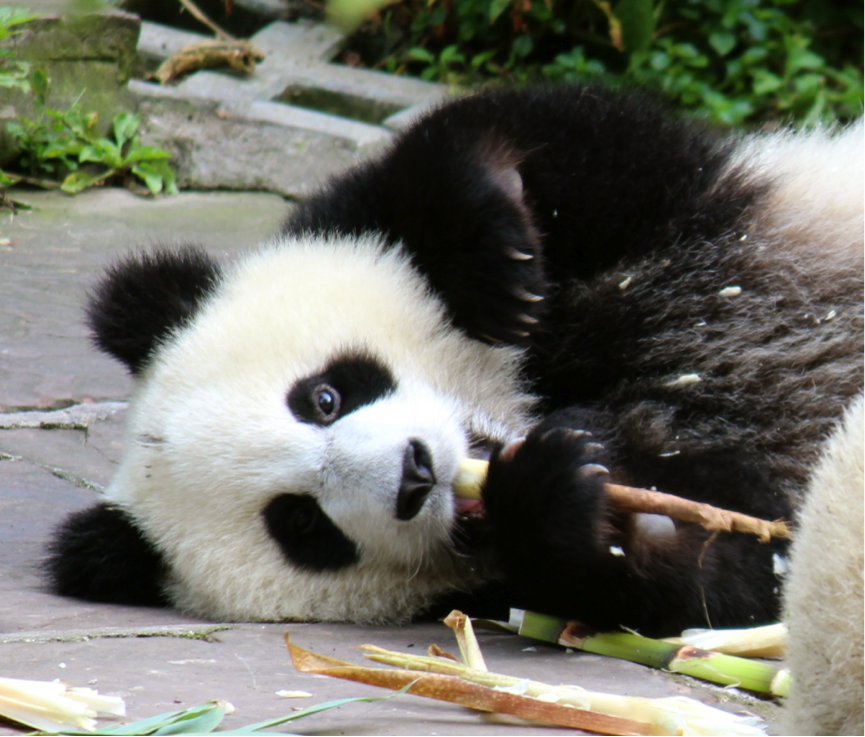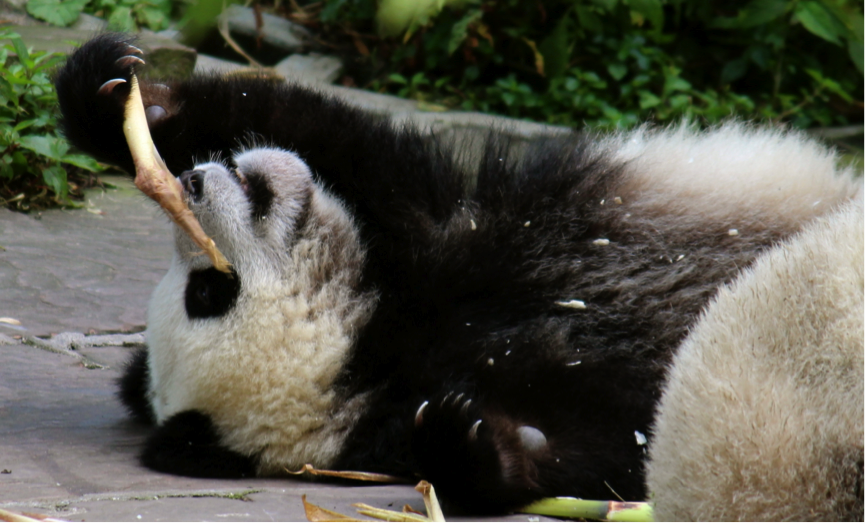The time that I’ve spent studying the giant panda at Bi Feng Xia Panda Base I feel like I have a gained a valuable and personal insight into these animals. They are a carnivorous bear yet eat bamboo, they have strong powerful claws yet seem so docile and almost lazy, they are incredibly playful at a young age but choose the solitary life when older. They just seem to defy all stereotypes of what this species should be. I find myself asking why. Why are they so different from what we would expect? So I’ve put together a list of five interesting facts to form a mini-blog series about the giant panda that I would not necessarily know had I not come to Bi Feng Xia.
Fact 1: Giant Panda’s are carnivores, yet 99% of their diet is bamboo
I used to think that the switch in the giant pandas’ diet was due to habitat destruction and depletion of their main food source. With a small background in evolutionary adaptations I knew that the pandas had evolved certain characteristics to be able to eat large quantities of bamboo. Thus anthropogenic effects could not be the reason why giant pandas switched to bamboo. Interest and curiosity found me researching this subject more and more. I found that an estimation of their dietary switch was around 4.2 million years ago. This made me even more intrigued. What happened 4.2 million years that caused them to switch from a carnivorous life to mainly herbivorous? The short answer I found was that no one really knows. However there are some theories that scientists have tested and seem logical.
There are five taste senses; sweet, salt, sour, bitter and umami. Umami, or savory, is believed to play an important role in the development of diet [1]. The molecular basis of umami involves the T1R1/T1R3 heterodimer. Li et al. (2010) [2] found that this gene has become pseudogenized in the giant panda, meaning they are non-functional due to a lack of protein-coding ability. Pseudogenes result from multiple mutations within a gene. This mutation is thought to have happened 4.2 million years ago in the giant panda [3]. Coincidence?
I do believe there’s more to this story. One taste receptor made redundant which caused an entire species to completely switch its diet? Jin et al. (2011) [3] looked into the giant pandas’ appetite-reward system and believe that they have some defects in the catecholamine metabolic pathways, which affects food choices. Dopamine has an important role in feeding behaviours, too much or too little can have significant effects. The dopamine metabolic system in the giant panda is not that capable [3] and maybe an ingredient in the bamboo is able to help the catecholamine, and dopamine, metabolic system. Jin et al. (2011) [3] do however state that further analysis into the chemical compounds of bamboo is advised in this area.
Stay tuned for fun fact #2 . . .
– Grace
[1] Wei, F., Hu, Y., Zhu, L., Bruford, M., Zhan, X., and Zhang, L. (2012) Black and white and read all over: the past, present and future of giant panda genetics. Molecular Ecology 21, 5660-5674.
[2] Li, R., Fan, W., Tian, G., et al. (2010) The sequence and de novo assembly of the giant panda genome. Nature 463, 311-317.
[3] Jin, K., Xue, C., Wu, X., Qian, J., Zhu, Y., Yang, Z., Yonezawa, T., James, M., Crabbe, C., Cao, Y., Hasegawa, H., Zhong, Y., and Zheng, Y. (2011) Why does the giant pand eat bamboo? A comparative analysis of appetite-reward-related genes among mammals. PLoS ONE 6(7).




